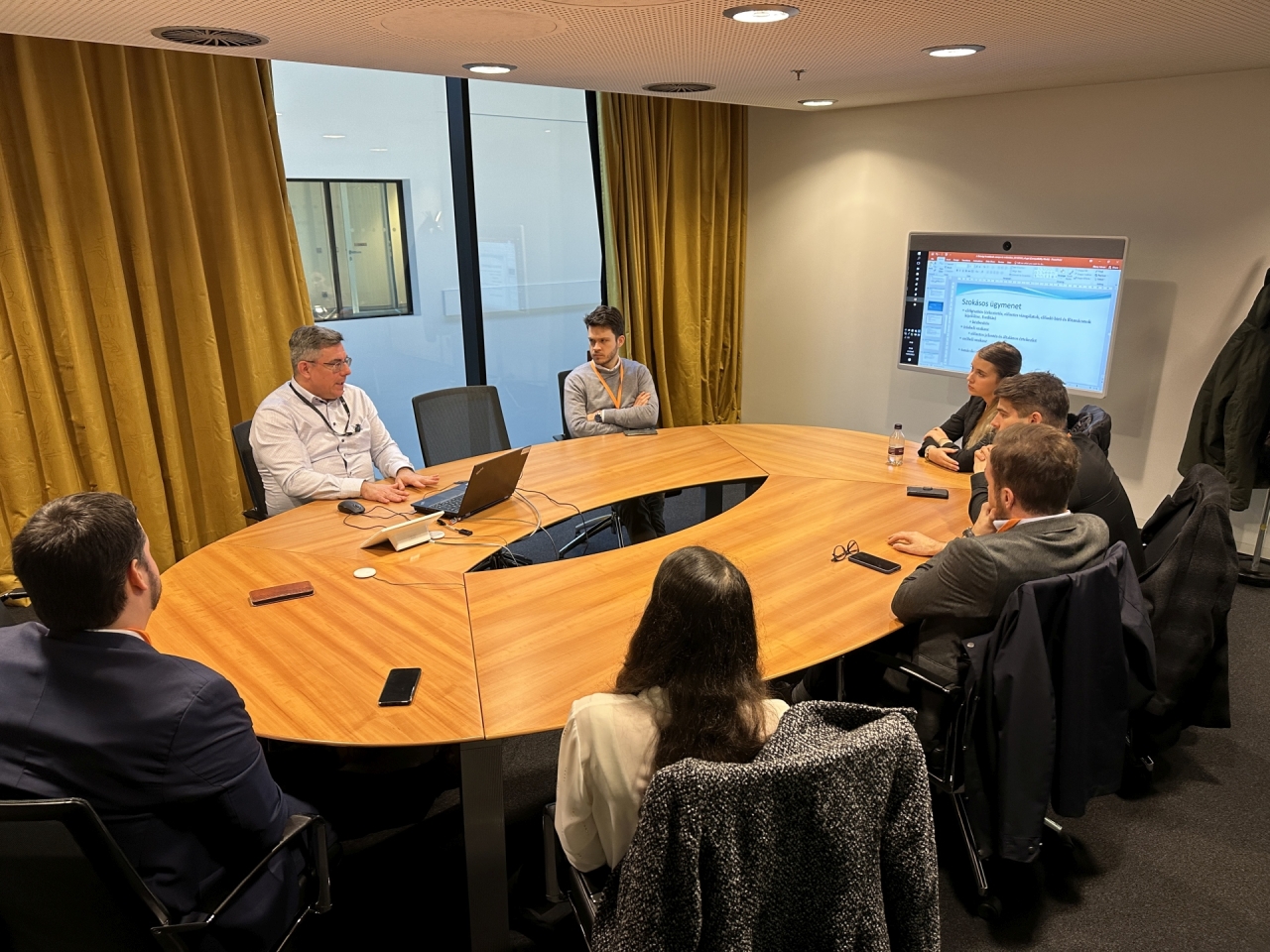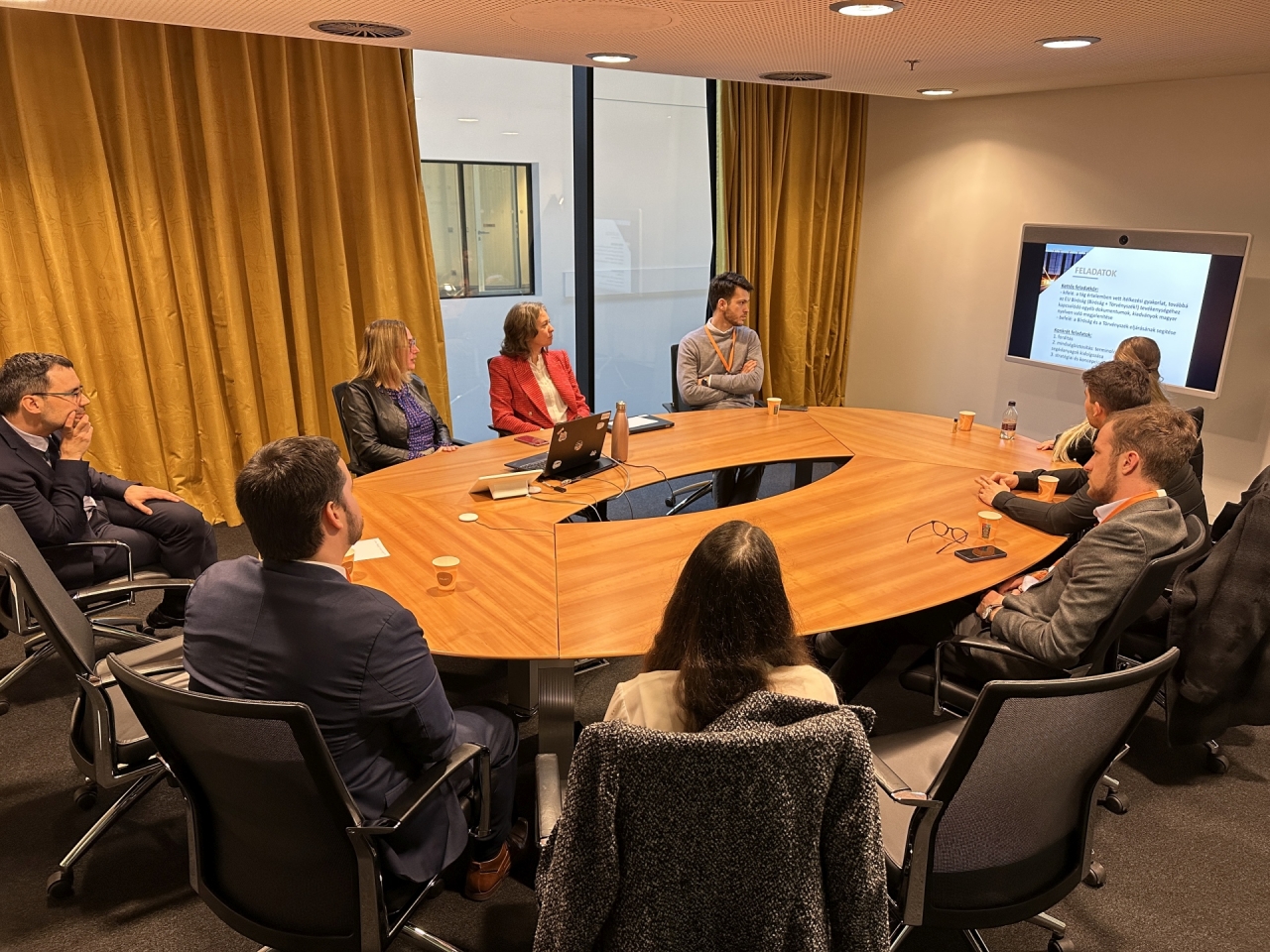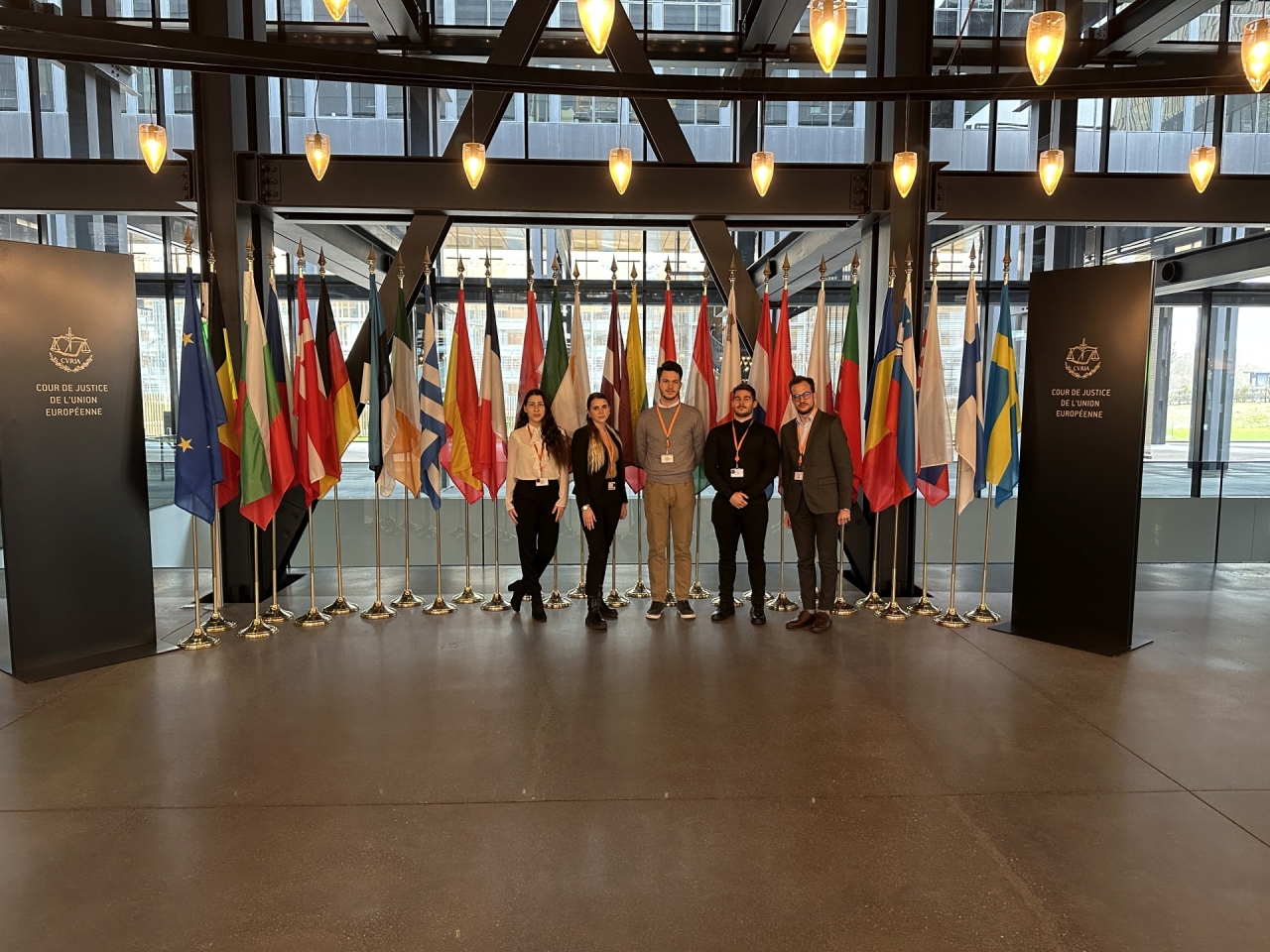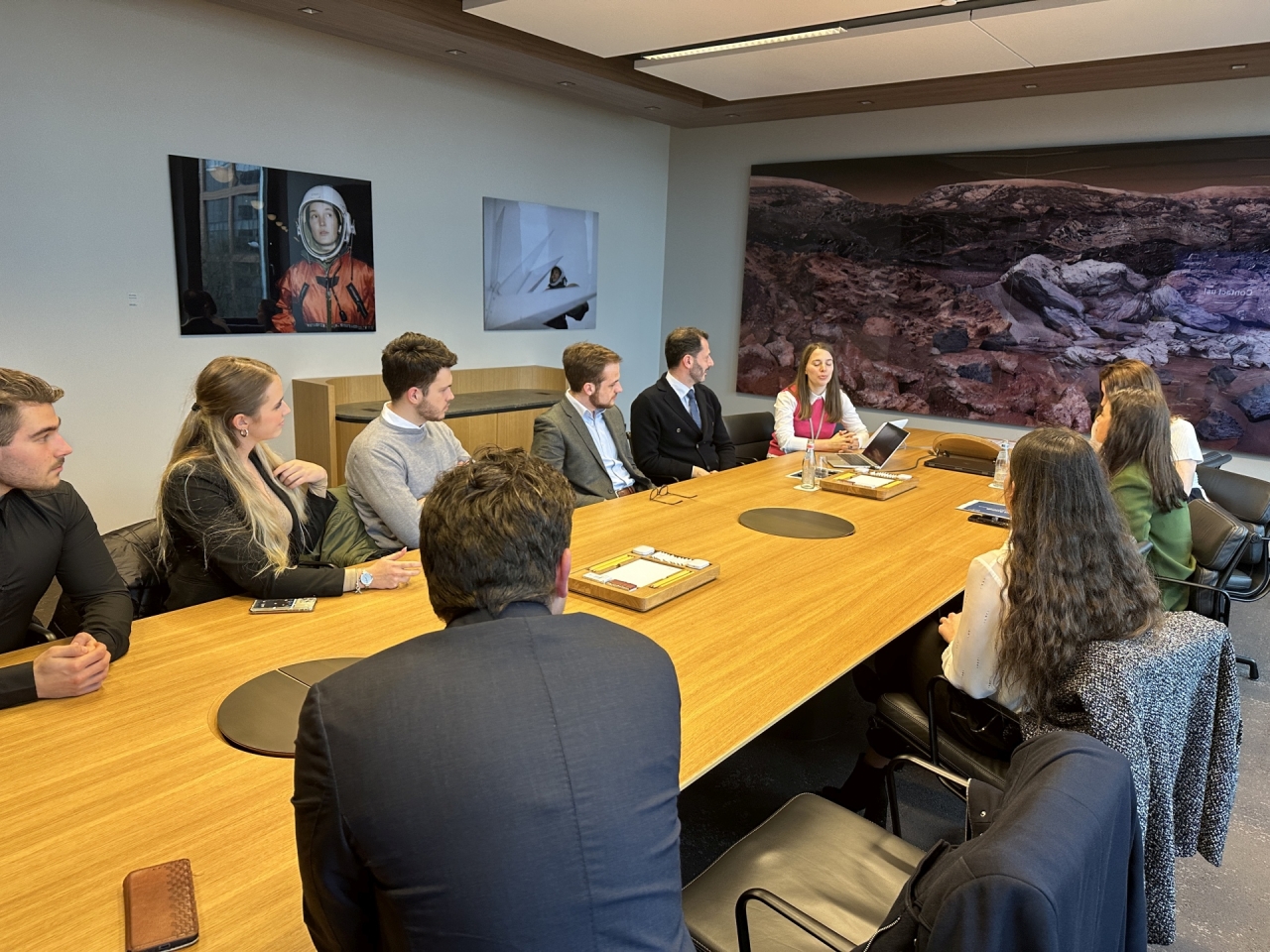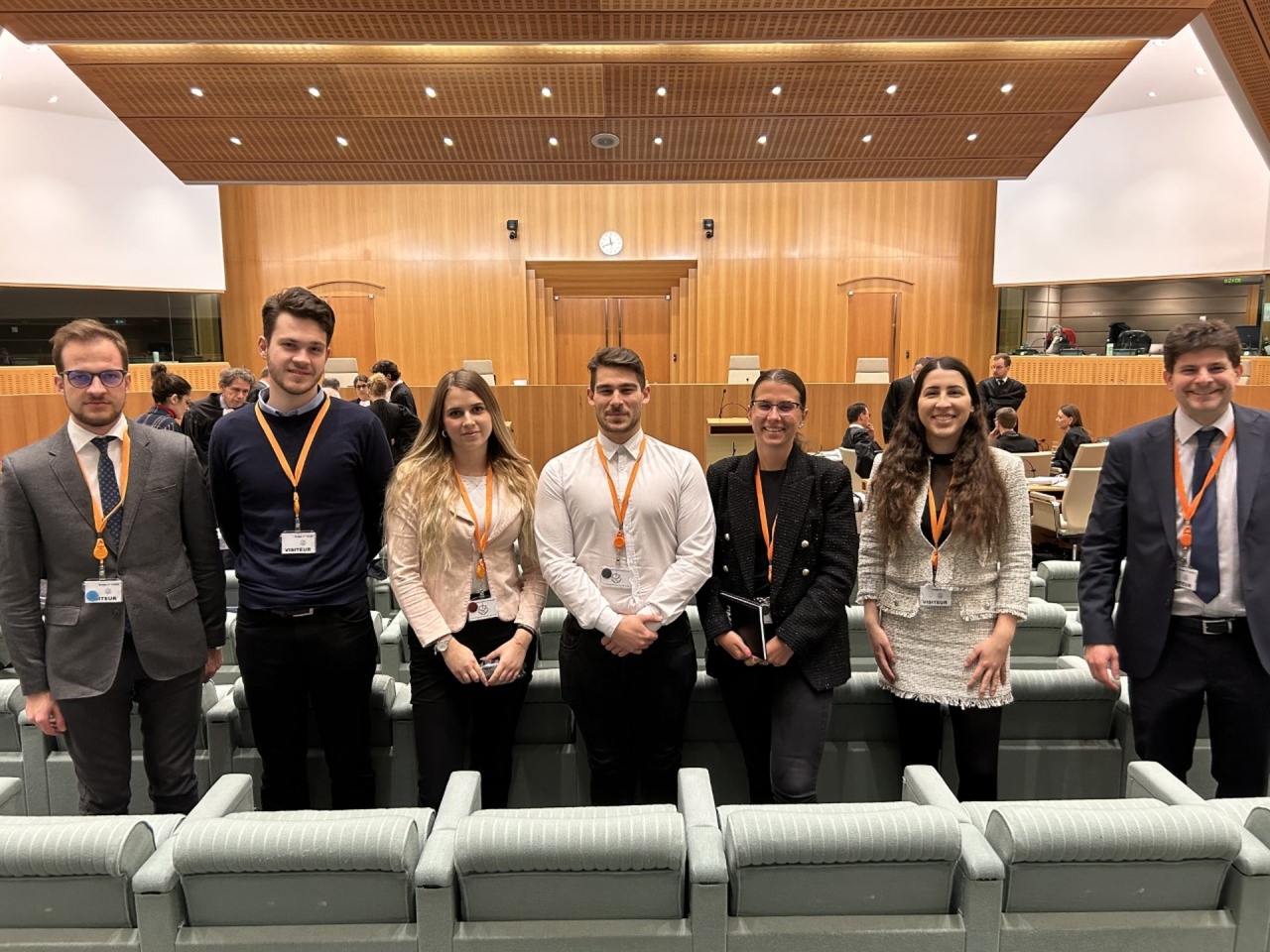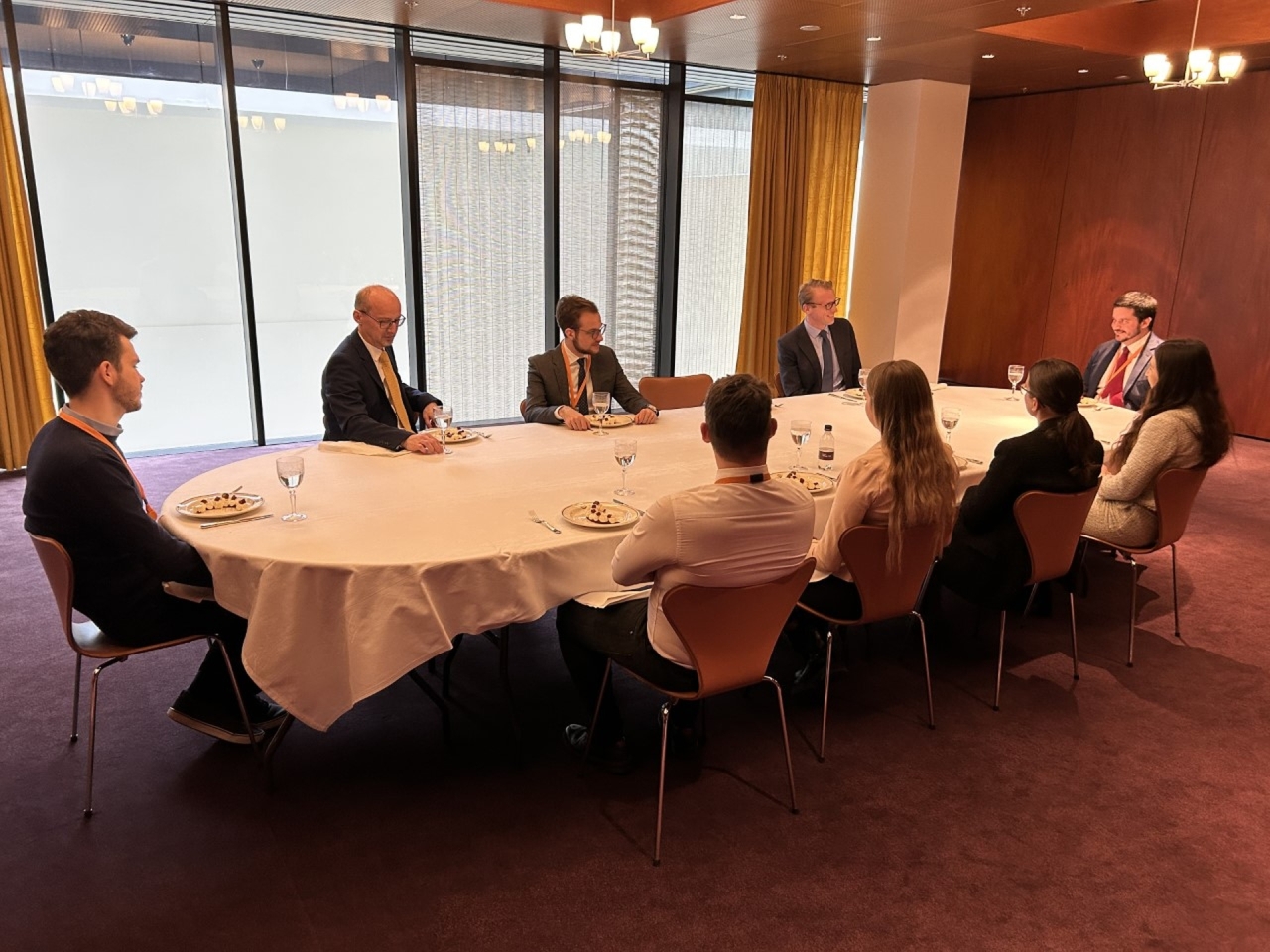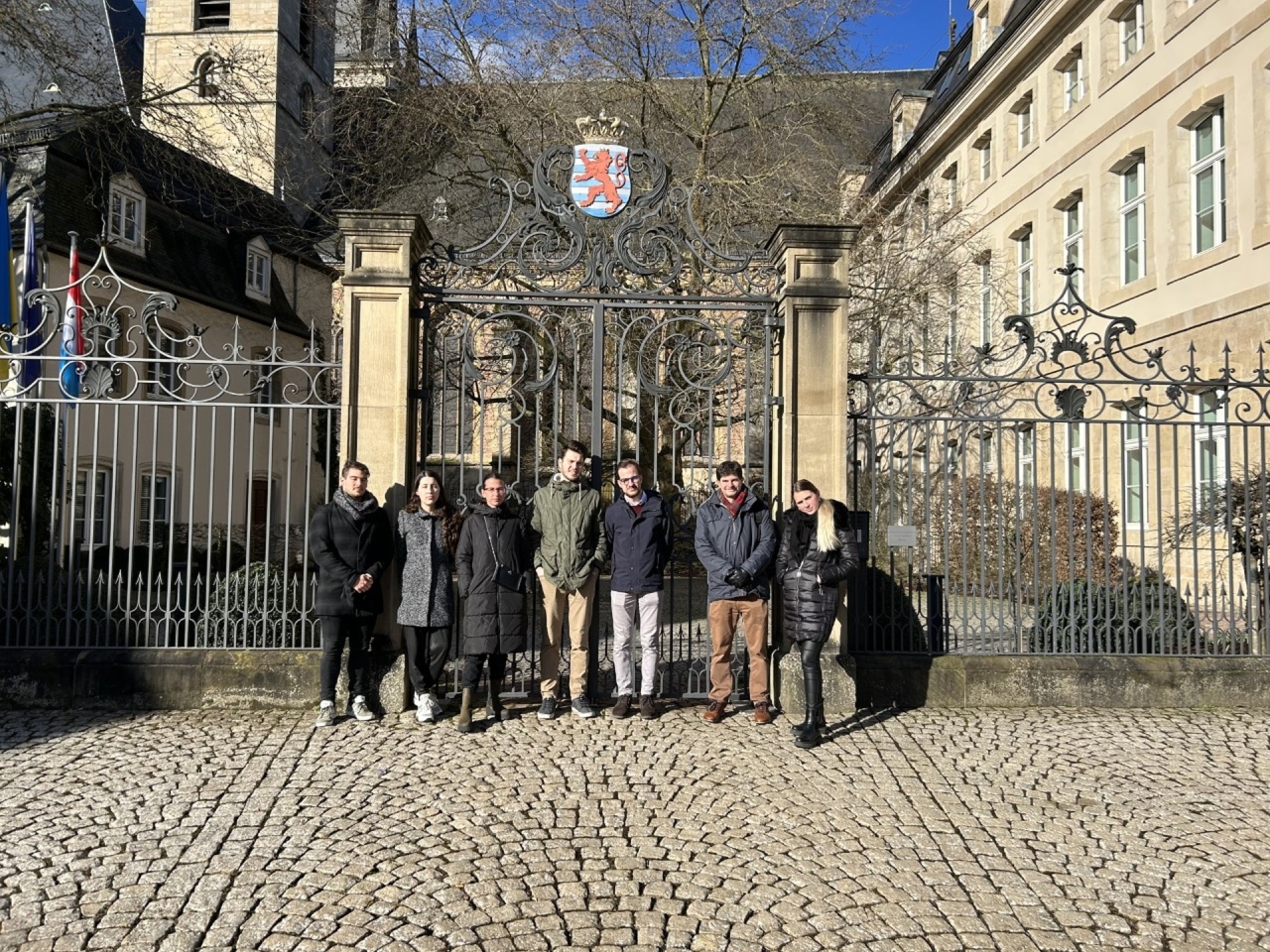Reading time: 3 minutes
Two days, two trials, seven lectures and fourteen experts: the MCC Center for International Law organized the Spring field trip to Luxembourg. MCC law students from Budapest, Pécs, Debrecen and Transylvania participated in the field trip to learn about the structure, composition, and competence of the Court of Justice of the European Union and also to understand its complex role, which textbooks cannot reveal. One of the key lessons MCC students has learned is that they did not visit a remote or abstract institution but instead a Court that has enormous impacts on their communities as well as on their own lives but which they can later shape themselves.
The principal goal of the field trip was to introduce MCC students from all over the Carpathian Basin to the history of the judicial branch of the European Union, its composition, structure, competence and the role it has played in the development of the European integration along with its place among the European, i.e. EU and national institutions. Among the latter questions was the underlying dilemma of the field trip, namely whether the CJEU emerged as the guardian of the European heritage or the innovator of the European integration. The students learned about these practical and theoretical questions by visiting trials, attending lectures and participating in both roundtable and informal discussions with judges, experts from the Court’s Registry, policy advisors, attorneys and academics. Judge Krisztián Kecsmár and Judge Tihamér Tóth hosted the student group and invited them for a lunch as well as for a personal discussion. In these meetings they both told interesting cases and stories about the everyday life of the Court, their judgments, how they handle cases as well as the challenges the CJEU faces. The students were also able to attend two trials in different cases, which provided them with a personal experience and a unique insight into the inner operation of the court.
Balázs Lehóczki provided valuable insights into the challenges and difficulties of the communication of the European judicial forums, while István Illéssy and Angéla Juhász-Tóth explained the operations of the Registry of the European Court as well as of the General Court. The demanding and challenging work of the lawyer-linguists were presented by Rita Petró, while Orsolya Garamvölgyi gave interesting insight into the operation of Research and Documentation Directorate of the CJEU. Furthermore, the MCC students had a chance to visit the library as well as the entire building of the CJEU. Árpád Lapu, policy advisor at the European Parliament, shed light on the relationship between the CJEU and the other institutions of the EU. Beyond the CJEU, the students were able to learn, but also how the various cases reach the Court. Paschalis Paschalidis counsel at the international law firm Arendt & Medernach SA along with Ursula Bassoukou and Miriam Postiglione, advisors as well as with Nadine Majerus human resources expert welcomed the student group and provided them with unique insights into the operation and challenges of an international law firm that also deals with EU law cases. In regard to the initial dilemma of the student group, Lénárd Sándor, head of the Center for International Law at MCC, explained that the CJEU has played a key role in the development of the EU law since the very beginning of the European integration. At the same time, it must be born in mind that Europe is first and foremost not a project, an internal market or an international organization, but it is a thousand years old civilization that has been the cradle of diverse cultures. Instead of constant innovation, they need to be safeguarded. Protecting this European heritage must be the mission of every institution that carries the name “Europe”. But the exact answer to the initial question of the field trip is something that MCC students will ultimately be able to shape through the jurisprudence of the Court throughout their legal career, since the CJEU is their institution too.



